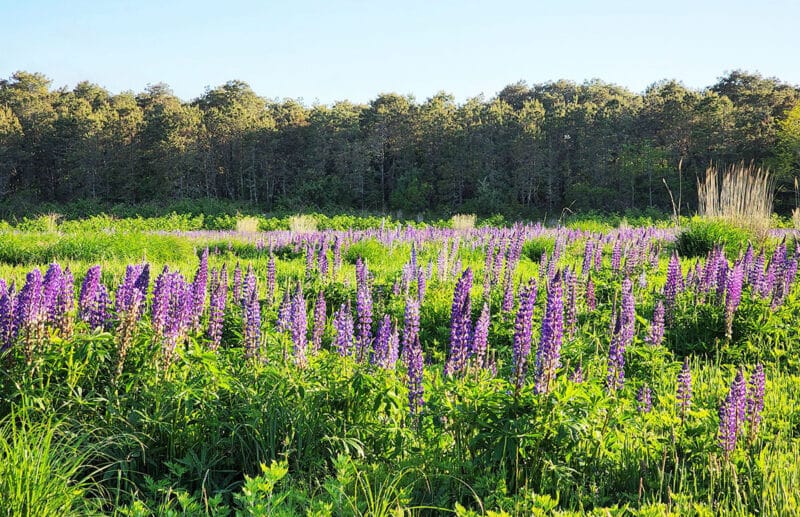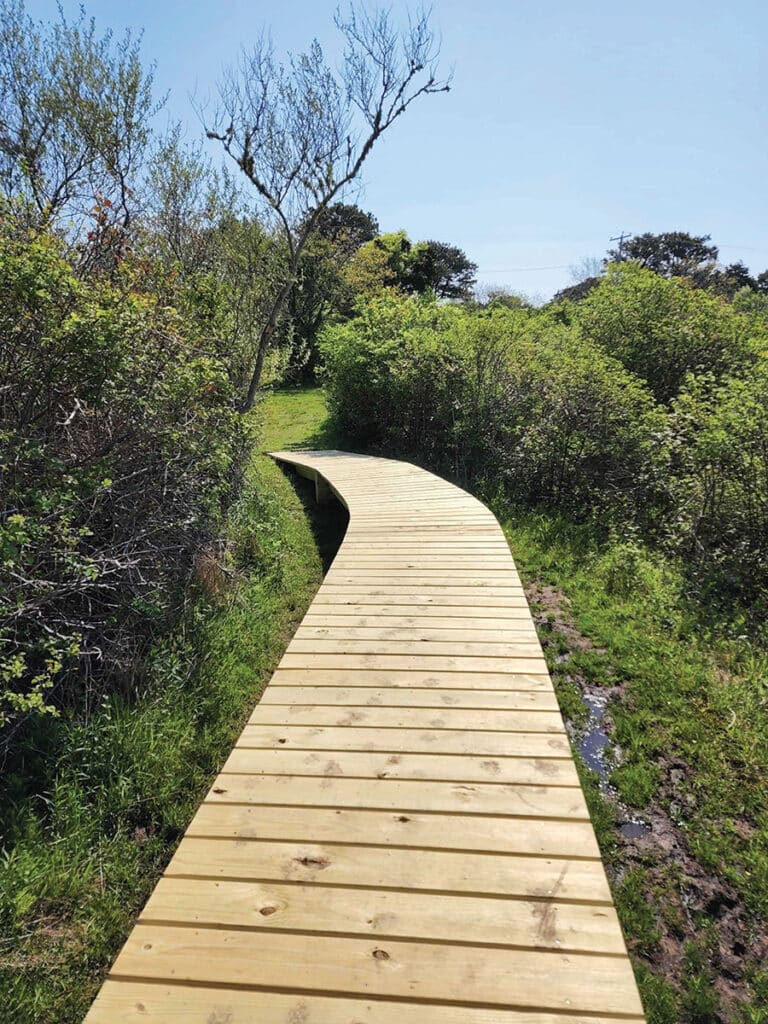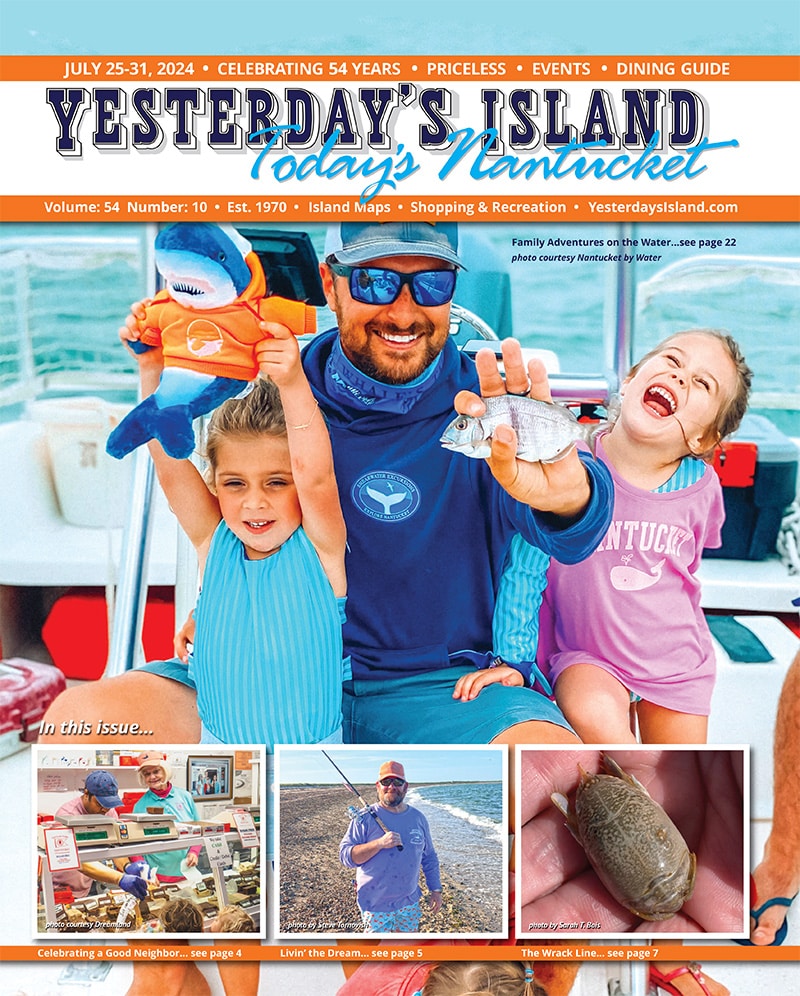by Dr. Sarah Treanor Bois, PhD
Director of Research & Education at the Linda Loring Nature Foundation
On Nantucket we like to boast about our open space and the amount of conservation land available to the public. In theory, these spaces are open to all. There aren’t any physical gatekeepers (unless you’re trying to drive to Great Point). But for many in our community and more broadly across the US, nature and open spaces aren’t as welcoming as some would like to think.
For those of us who regularly spend time on our trails and open spaces, we can feel at home in the natural world. This is a privilege not shared by everyone in our communities. According to a recent National Parks Service survey, about 78 percent of those who visit federal parks are white. Meanwhile, African Americans, Latinos, women, and members of the LGBTQ+ community often report feeling unwelcome or unsafe in outdoor spaces.
Clean drinking water, clean air, public parks, and beaches, biodiversity and open spaces are shared public resources that every person has equal rights to. Nature is seen as the “great equalizer” where these things are free. In reality, however, nature benefits are distributed unequally in our country by race, income, and age. We are so fortunate here on Nantucket that most of these services are indeed free: beach parking, trail access, even many program offerings. More than just existing as free resources, we need to make sure people know about and feel welcome in these spaces to better serve our whole community.
Our country has a history of discrimination in parks and the outdoor movement. As we work towards making our conservation lands more accessible, welcoming, and safe, we have to understand more about our past and the various people who will use them.
There is distrust and anxiety by some relating to outdoor activities and open spaces because some haven’t always been welcomed. I was reminded of that very real fear by Aileen Dashurova, founder and organizer of Nantucket Gay Pride. The very real memory of Matthew Shepard and his horrific outdoor beating and ultimate death stick with many in the LGBTQ+ community. Hate crimes can happen anywhere. I asked her what it would take to make people feel safe in our outdoor spaces? “Each person is individual, and therefore, each person in the LGBTQ+ community will feel a different sense of comfort being queer out doors and on the trails.” Dashurova replied.
Dashurova offered some insight into what can be done to feel safe in our open spaces. In some cases, it might be a Unity Flag or other LGBTQ+ recognized symbol on display for people to know all are welcome. “This could show that there is intolerance for any hate crimes and therefore a commitment to everyone’s safety. It would also ease some worry if trails and areas are checked by safe staff or volunteers at reasonable intervals.” This is especially true with cellphone service being unreliable in many parts of Nantucket Island, especially in more remote open space areas.
Kimal McCarthy, the Town of Nantucket’s Diversity, Equity, & Inclusion Director, told me that to feel safe in open/outdoor spaces requires, first, a sense of belonging. “For some DEI practitioners, belonging is subcategory of inclusion, and for others belonging is a concept onto itself. Belonging is the ongoing culture created to have all people feel welcomed. It is important that residents know they are invited to walk open space trails and use recreational outdoor spaces with the boundaries of purpose.”
Our changing population on Nantucket also means changing the intimacy of our island community. With greater population growth, we also see diversity of language, culture, and demographics. The idea about who “belongs” in nature spaces should mimic our demographics. The tranquil, open spaces and trails are for everyone.
Aileen Dashurova pointed out “We have been a more protected community on Nantucket, however that is changing rapidly. (T)he extended global community who work, live, and vacation on the island means that accountability, justice, and safety issues are on the increase. Nantucket is accepted by many as an idyllic paradise and the beauty of the island is unquestionable. This does not mean that it was, is, or will be safe for all people, including the LGBTQ+ community.”
We know from the work with our Nantucket public schools, that our language diversity on island has increased. For a long time, translations were only for signs telling people what NOT to do. That isn’t a very welcoming message. We are hoping to lead moving forward with more positive communication. At the Linda Loring Nature Foundation, our self-guided nature trail has been translated into the top five languages as identified by the NPS system (Spanish, Portuguese, Russian, Nepalese, and Bulgarian). Interpretive signage in many areas of Nantucket is also being translated. The Story Walk trail, a partnership between LLNF and the Nantucket Community School, is translated into Spanish (if a Spanish version doesn’t already exit). The last story, The Tiny Seed by Eric Carle, was posted in Spanish with the English translation available.
When I asked Kimal McCarthy about how welcome diverse populations feel when visiting Nantucket’s open spaces, he remarked that the conservation properties on-island are welcoming. There are no restrictions or exclusion on who can or cannot use open spaces here. “However,” he remarked, “there are things conservation and open spaces organizations on-island can do to be more inclusive. My recommendations are education and accessibility. Accessibility is accountability and accommodation for disability (-ies). Ideas for accessibility can include providing terrain appropriate wheelchairs or constantly ensuring that paths are cleared of logs/ heavy debris that may disrupt access. Use of technology can expand on this idea by using drones to record open spaces path for anyone, especially those with disabilities, to visit Nantucket’s open spaces virtually.”
We know that not all trails and access points are created equally, so having the information available means that people can make informed decisions about accessibility for their requirements. One great resource is Birdability hosted by National Audubon Society. While geared towards birding, the information provided about terrain, benches, and other accessibility metrics can be used by anyone looking to access a natural area. As the Birdability website states, “The purpose of the Birdability Map is to allow people with disabilities and other health concerns access to this information ahead of time, to help them decide if a location is one they would like to visit.” The Birdability Map can be found at gis.audubon.org/birdability.
Issues of exclusion cannot be solved overnight. But there are steps those of us in the conservation field can take to encourage progress. Being a welcoming place isn’t a passive activity, it requires action. It means being vocal about being welcoming. It means voicing that our properties are safe spaces and then following up by making sure safeguards are in place to protect people who are marginalized or discriminated against.
Nature can be healing, freeing, and a place of solace for many people. But there isn’t a right way to be in nature. By being for everyone, it also means that we are accepting of different ways people experience nature. There are rules at different properties for the protection of resources and for the particular mission of that organization; for example rules of “no dogs” or to stay on trails are for the protection of wildlife and rare species. Beyond that, how people experience nature is left up to them. Guided experience, alone-time, family outing, hunting, fishing, walking the dog on the many properties where dogs are permitted, foraging, praying, meditating, recreating—there is no right or wrong way.
“Education on the benefits of using recreational spaces is needed and should be ongoing. I think if diverse residents are aware of the many benefits of being outside and the many activities you can do on-island (biking, disc golf, walks, etc.) then there will be more enthusiasm in being outdoors,” McCarthy noted.
As a land trust professional, I have been thinking about the “trust” part of that term. I know it means that we are entrusted with the land, but the other part of that is the trust people put in us when then come to our property. How can we honor that trust? A colleague organization in Vermont has a shared commitment statement that they start off each program with and which guides much of their work. A part of that commitment sticks with me:
We strive to help people feel welcomed, oriented to the landscape, engaged, inspired, safe, and part of our community.
We expect that all who enter this shared space do so in the spirit of welcoming kindness, inclusivity, respect, and curiosity.
I hope that we can all continue with kindness and curiosity as we continue to enjoy our natural areas and truly welcome all.




